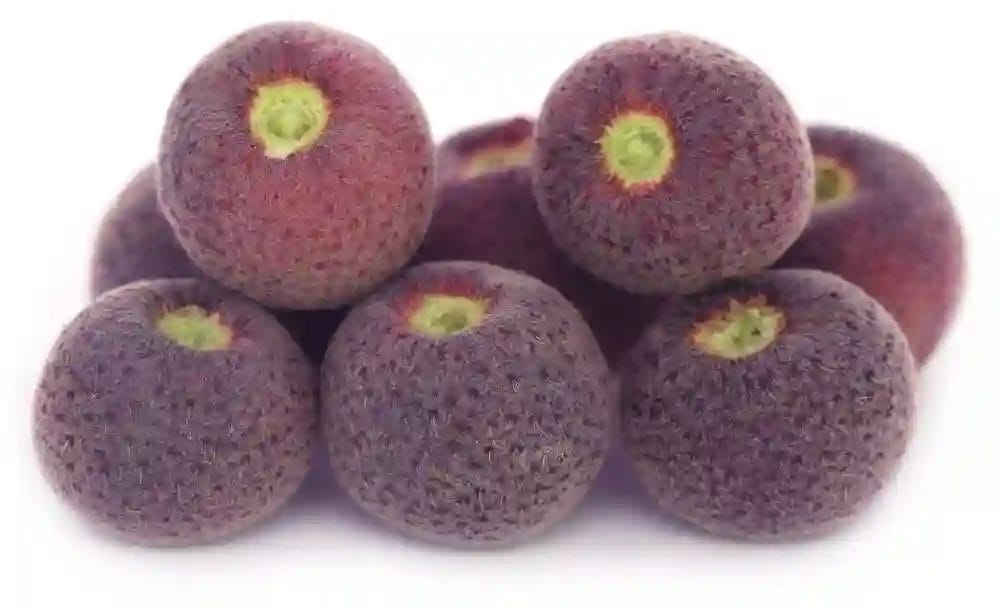This article is reviewed by an expert
Have you ever eaten a Falsa fruit?
Falsa fruit, scientifically known as Grewia asiatica L., is a small, purple berry native to South Asia, well-known for its diverse medicinal uses (1). The fruit is not only delicious but also packed with nutrients that are essential for maintaining a healthy lifestyle.
Let’s find out more about Falsa fruit in this article.
Nutritional Facts About Falsa Fruit (1)
Falsa fruit is rich in proteins, amino acids, vitamins, and minerals that are essential for a healthy body. Additionally, it contains various bioactive compounds, such as anthocyanins, tannins, phenolics, and flavonoids, that have been found to have numerous health benefits.
The Many Benefits of Falsa Fruit
Image Courtesy: ResearchGate
1. Antioxidant Activity (1)
Primary Benefits: Falsa fruit has a high content of antioxidants like vitamin C, total phenolics, flavonoids, tannins, and anthocyanins.
Secondary Benefits: These antioxidants help protect our body from oxidative stress caused by free radicals and reduce the risk of chronic diseases like cardiovascular disease, diabetes, etc.
2. Radioprotective Effect (1)
Primary Benefits: Falsa extract has been found to have a natural radioprotective effect. Scientists in India have conducted extensive research in this area and found encouraging results by using G. asiatica fruit extract as a safe, cost-effective radioprotective agent.
Secondary Benefits: As such, Falsa fruit can be used to minimise the side effects of nuclear radiation exposure.
3. Anticancer Activity (1)
Primary Benefits: Several studies have shown that aqueous extracts of leaves and fruits of Phalsa exhibit potent anticancer activity against liver and breast cancer.
Secondary Benefits: Falsa fruit can, therefore, help reduce the complications of cancer and cancer treatments.
4. Antimicrobial Activity (1)
Primary Benefits: Falsa leaves are rich in antimicrobial, antibacterial and antifungal properties.
Secondary Benefits: Hence, Falsa leaves can be used to treat skin problems like rashes and pustular eruptions.
5. Antihyperglycemic Activity (1)
Primary Benefits: The fruit, stem bark, and leaves of the Falsa plant possess significant antihyperglycemic activity. In addition, Falsa fruits also have a low GI or glycemic index value.
Secondary Benefits: Hence, Falsa fruit can help regulate blood glucose levels, manage diabetes and prevent diabetes complications.
6. Anti-Hyperlipidemic Activity (1)
Primary Benefits: Several studies have shown that the leaves of G. asiatica have potent anti-hyperlipidemic effects. It is known to reduce cholesterol and triglyceride levels in the body.
Secondary Benefits: As such, Falsa fruit can help lower the risk of developing cardiovascular diseases such as atherosclerosis, heart attack, and stroke.
7. Anti-Inflammatory Activity (1)
Primary Benefits: According to research, the methanol extract of Falsa fruit shows significant anti-inflammatory activity.
Secondary Benefits: As a result, Falsa fruit can also help prevent and manage several chronic illnesses like arthritis, heart disease, diabetes, and cancer.
8. Neuromodulatory Activity (2)
Primary Benefits: The phenols, flavonoids, and anthocyanins present in the Falsa fruit exhibit potent antioxidant, anti-cholinesterase, and neuromodulatory activity.
Secondary Benefits: As such, Falsa fruit can help reduce anxiety and depression-like behavior.
How To Consume Falsa Fruit?
- You can eat the Falsa fruits directly after rinsing them thoroughly with water. You may also add a pinch of black salt to them if you like.
- You can make Falsa Sharbat or Falsa juice by blending the fruits with water, sugar, and salt. You may also add a pinch of Chat Masala to it if you like.
- You can also extract the pulp of Falsa fruit and boil it with sugar to make a sweet and tangy jam that can be spread on bread or used as a topping for desserts.
FAQs About Falsa Fruit
1. How to prepare falsa chutney?
Mix the ripened falsa fruits and sugar in a heavy-bottomed saucepan and keep it like that overnight. Next day cook the mix on low flame. Soon you’ll see the sugar melting. The falsa fruits will turn soft and tender simultaneously. Your falsa chutney is ready. Just pour it into a clean glass jar and refrigerate it once it has cooled down.
2. How to store falsa fruit?
Storing falsa fruit is not wise as these fruits have a very short shelf life and can get rotten quickly. So, try to eat them fresh.
3. Are Falsa leaves equally beneficial?
Falsa fruit is in the limelight, but one should also consider the falsa leaves. Though research on this subject is limited, falsa leaves have been used in folk medicine for their amazing pain-suppressing and anti-inflammatory attributes. The falsa leaves may be used in the poultice or brewed as tea to relieve painful symptoms.
On a Final Note
Falsa fruit is a small purple berry, packed with essential nutrients like proteins, vitamins, and minerals. It is rich in numerous medicinal properties, such as antioxidant, anticancer, antihyperglycemic, anti-hyperlipidemic, and anti-inflammatory, and therefore helps prevent and manage several chronic illnesses like heart disease, diabetes, and cancer.
Moreover, Falsa fruit is easy to consume and can be eaten raw or made into Falsa juice or jam. Its tangy taste makes it a popular choice for desserts and drinks.
Disclaimer: This article is written from a health and lifestyle perspective.



















